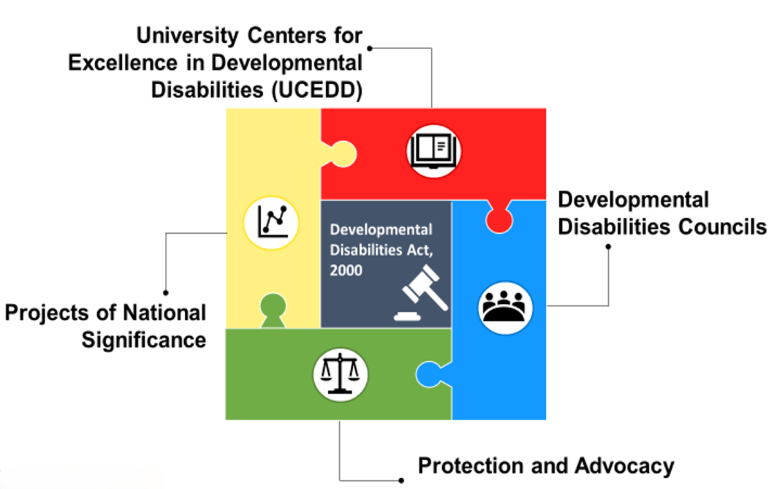History of the State of the States

How it Began
While working on his doctorate in Special Education from the University of Texas at Austin, David Braddock began working part time as a recreation specialist at the Austin State School. This experience was the beginning of his life-long dedication to advocating for people with intellectual and developmental disabilities. Click the link below to learn more about Dr. Braddock and his impact on the disability field.Dr. Braddock’s experience inspired the subject of his dissertation comparing the financial impact of institutional vs. community care for people with IDD (1969-1973). His dissertation was the foundation for the first ‘State of the States in Developmental Disabilities Project’. The project would then be led by Dr. Braddock as the Principal Investigator of the project and housed at the University of Illinois at Chicago until 2001. Shortly before the move from Chicago, the State of the States project would become protected by the DD Act, or the Developmental and Disabilities Assistance and Bill of Rights Act of 2000.
The purpose of the Developmental Disabilities Assistance and Bill of Rights Act is to” …assure that individuals with developmental disabilities and their families participate in the design of and have access to needed community services, individualized supports, and other forms of assistance that promote self-determination, independence, productivity, and integration and inclusion in all facets of community life …".

For the State of the States project, this meant that the project would be protected under the DD Act as a Project of National Significance. Projects of National Significance (PNS), “will focus on empowering individuals with intellectual and disabilities, their families, and the communities they live in. Overall, these projects will create opportunities for individuals with developmental disabilities to directly and fully contribute to, and participate in, all facets of community life; and support the development of national and State policies that reinforce and promote, with the support of families, guardians, advocates, and communities, of individuals with developmental disabilities, the self-determination, independence, productivity, and integration and inclusion in all facets of community life of such individuals.”
As of the DD Act’s creation, the now ‘State of the States in Intellectual and Developmental Disabilities Ongoing Longitudinal Data Project of National Significance’ has remained one of only 3 existing long-term PNS. The other two projects, the Residential Information Systems Project (RISP) and StateData.info, are housed at the University of Minnesota and the University of Massachusetts respectively. However, unlike the other PNS’, the State of the States project is the only project to have left its university and UCEDD since its inception.
The Evolution-
In 2001, Dr. Braddock moved the State of the States project and two key staff, Mary Kay Rizzolo and Rick Hemp, from UIC to the University of Colorado. Dr. Braddock became Director and Coleman-Turner Chair of the Coleman Institute, where he focused on catalyzing advances in technology for people with cognitive disabilities. The project was housed in the president’s office of the University of Colorado. Dr. Braddock maintained the State of the States as one of the projects through his faculty research.
In preparation for retirement, Dr. Braddock brought on Dr. Shea Tanis as the Co-Principal Investigator of the project. Prior to this, Dr. Tanis had served in an advisory role on the project, and also worked as the Research Director for the Coleman Institute since 2010. Dr. Tanis took on full Principal Investigator status in 2018 for the new grant cycle (2018-2023) and moved the project one last time to the University of Kansas (KU) in the winter of 2021. The KU Center on Disabilities (KUCD) became the first UCEDD to house the project in 20 years.